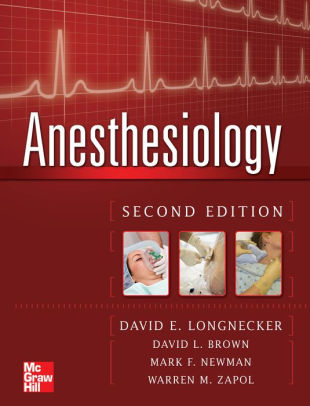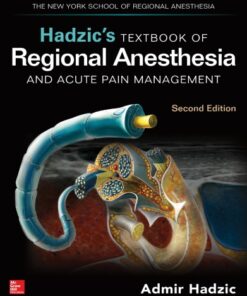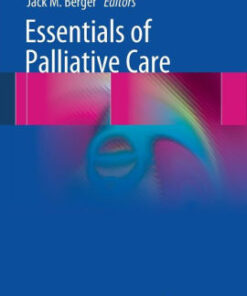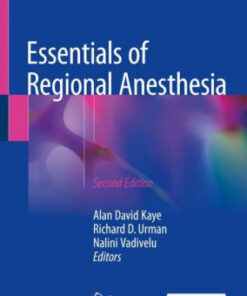(PDF) Anesthesiology 2nd Edition by Longnecker
$22.00
Download instantly Anesthesiology 2nd Edition by David E. Longnecker, David L. Brown, Mark F. Newman, Warren M. Zapol. It is ebook in PDF format.
ISBN-10: 0071785132 ISBN-13: 9780071785136
Preview
This is the PDF eBook version for Anesthesiology 2nd Edition by David E. Longnecker, David L. Brown, Mark F. Newman, Warren M. Zapol
Table of Contents
Part 1. The Specialty of Anesthesiology
1. The Evolution of Anesthesiology as a Clinical Discipline–A Lesson in Developing Professionalism
2. The Scope and Future of Anesthesia Practice
3. Safety and Quality: The Guiding Principles of Patient-Centered Care
Part 2. Preparing for Anesthesia
Section A: Approach to the Anesthesia Patient
4. Overview of Preoperative Assessment and Management
5. The Anesthetic Plan for Healthy Patients
Section B: Preoperative Evaluation of the Anesthesia Patient
6. Appropriate and Effective Use of Consultants
7. Evaluation of the Patient with Cardiovascular Disease
8. Evaluation of the Patient with a Difficult Airway
9. Evaluation of the Patient with Pulmonary Disease
10. Evaluation of the Patient with Neuropsychiatric Disease
11. Evaluation of the Patient with Neuromuscular or Skeletal Disease
12. Evaluation of the Patient with Endocrine Disease or Diabetes Mellitus
13. Evaluation of the Patient with Renal Disease
14. Evaluation of Patients with Hepatic Disease
15. Anesthetic Considerations for the Patient with Anemia or Coagulation Disorders
16. Evaluation of the Patient with Perioperative Malnutrition
17. Principles of Antimicrobial Therapy
18. Preoperative Assessment of the Newborn
19. Evaluation of Children
20. Evaluation of the Geriatric Patient
21. Evaluation of the Pregnant Patient
22. Evaluation of the Obese Patient
23. Evaluation of the Patient with Alcohol or Drug Addiction
Part 3. Safety and Risk Reduction in Anesthesia Practice
24. Anesthesia Risk
25. Approaches to Quality Improvement in Anesthesia Care
26. Positioning of Patients for Operation
27. Electricity, Electrical Safety, and Instrumentation in the Operating Room
Part 4. Managing Anesthesia Care
Section A: Monitoring the Anesthesia Patient
28. Perioperative Information Management Systems
29. Hemodynamic Monitoring
30. Intraoperative Transesophageal Echocardiography: A Systematic Approach
31. Monitoring Respiratory Function
32. Intraoperative Neurologic Monitoring
33. Monitoring and Managing Neuromuscular Blockade
34. Monitoring and Managing Perioperative Electrolyte Abnormalities, Acid-Base Disorders, and Fluid Replacement
Section B: Managing the Airway
35. Airway Management
Section C: Anesthesia Drugs and Drug Delivery Systems
36. Mechanisms of General Anesthetic Action
37. Pharmacology of Inhalational Anesthetics
38. Anesthesia Delivery System
39. Principles of Pharmacokinetics and Pharmacodynamics: Applied Clinical Pharmacology for the Practitioner
40. Pharmacology of Intravenous Anesthetics
41. Pharmacology of Opioid Analgesics
42. Total Intravenous Anesthesia
43. Cardiovascular Drugs
44. Pharmacology of Local Anesthetics
Section D: Regional Anesthesia
45. Incorporating Regional Anesthesia into Anesthetic Practice
46. Neuraxial Anesthesia
47. Paravertebral Anesthesia
48. Peripheral Nerve Blocks
49. Managing Adverse Outcomes during Regional Anesthesia
Section E: Specialty Areas of Anesthetic Practice
50. Neuroanesthesia
51. Cardiac Anesthesia
52. Anesthesia for Surgical Treatment of Congenital Heart Disease: A Problem-Oriented Approach
53. Thoracic Anesthesia
54. Anesthesia for Major Vascular Surgery
55. Anesthesia for Gastrointestinal Surgery
56. Anesthesia for Liver Surgery and Transplantation
57. Anesthesia for Heart or Lung Transplantation
58. Anesthesia for Kidney, Pancreas or Other Organ Transplantation
59. Endocrine Surgery and Intraoperative Management of Endocrine Conditions
60. Anesthetic Considerations for Genitourinary and Renal Surgery
61. Anesthesia for Obstetrical Care and Gynecologic Surgery
62. Anesthesia for Newborn Surgical Emergencies
63. Anesthesia for Children
64. Anesthesia for Orthopedic Surgery
65. Anesthesia for Ophthalmic Surgery
66. Anesthesia for Otorhinolaryngolic (Ear, Nose, and Throat) Surgery
67. Outpatient Anesthesia
68. Monitored Anesthetic Care and Conscious Sedation
69. Anesthesia Care for Diagnostic or Therapeutic Procedures Outside of the Operating Room
70. Anesthesia for Trauma Patients
71. Anesthetic Management of the Burned Patient
Part 5. Postoperative Care of the Anesthesia Patient
72. Recovery of the Healthy Patient
73. Postoperative Complications
74. Management of Acute Postoperative Pain
Part 6: The Critically Ill Patient
75. The Pathophysiology of Critical Illness
76. Evaluation of the Patient with Multiple Organ Dysfunction Syndrome
77. Evaluation of the Burned Patient
78. Evaluation of the Trauma Patient
79. Developing the Anesthetic Plan for the Critically Ill Patient
80. Monitoring and Transport of the Critically Ill Patient
81. Postoperative Care of the Noncardiac Surgical ICU Patient
82. Hemodynamic Support of the Critically Ill Patient
83. Mechanical Ventilation for the Surgical Patient
84. Cardiopulmonary Resuscitation
Part 7. Special Considerations in Anesthesia Care
85. Blood and Blood Component Therapy
86. Cognititve Dysfunction after Anesthesia and Surgery
87. Protection of the Central Nervous System in Surgical Patients
88. Anaphylactic Reactions and Anesthesia
89. Malignant Hyperthermia, Thermoregulation, and Perioperative Hypothermia
Part 8. Care of the Chronic Pain Patient
90. Mechanisms of Chronic Pain
90. Common Pain Syndromes
92. Medical Management of Chronic Pain
93. Interventional Management of Chronic Pain
94. Palliative and Cancer Pain Care
Part 9. Practice Related Issues
95. Legal Issues in Anesthesiology
96. Substance Dependence and Abuse in Anesthesia Care Providers
97. The Economics of Health Care and Anesthesia Practice
98. Practice Management
Appendix A: Formulary




